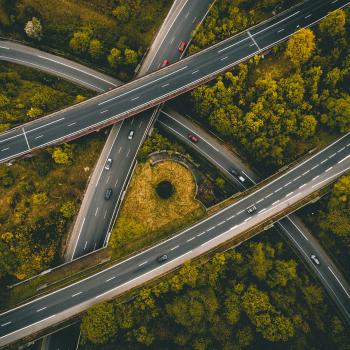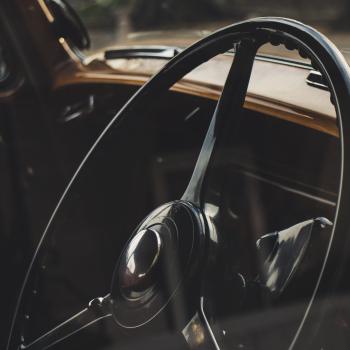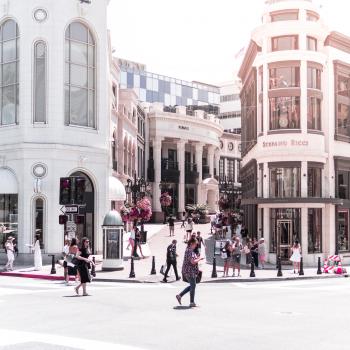 When the creamy, letter-press-printed wedding invitation arrived on a wintry February day, it seemed an opportunity too good to pass up: The groom was a childhood friend who had been longing for a bride ever since our college days. A quarter-century later, he finally found her.
When the creamy, letter-press-printed wedding invitation arrived on a wintry February day, it seemed an opportunity too good to pass up: The groom was a childhood friend who had been longing for a bride ever since our college days. A quarter-century later, he finally found her.
The wedding was in Mississippi, and I could visit my beloved, Jackson-based older brother without husband and children in tow, for two days afloat and unmoored, a single girl again. I pulled the credit card out of my purse and began searching for flights.
But frivolity was not what I was thinking about on the wedding day; instead the very opposite, the tangle of inchoate obligations that tether us.
We decided to drive up to Yazoo City to visit our parents’ graves. Despite the previous late night, with a long wine- and conversation-filled dinner after my flight, and even though it was already late morning and the wedding was back in Jackson at three that afternoon, we poured coffee and set off on the forty-two mile drive up Highway 49 in my brother’s Toyota Camry.
The long ribbon of highway unfurled, yawing up and down through hills draped wildly in kudzu vines, barely a hint of a town visible although the road passes by three of them: Flora, Bentonia, and at last and finally, Little Yazoo.
This is the road I took when I left my hometown thirty years ago at thirteen, and the leaving has felt decisive ever since. Each time I return, it feels at the level of my most animal consciousness—almost at the level of my cells, even—as though I am being pulled back home.
This is the clichéd Southern emotion, of course, and to admit it so guilelessly sometimes makes me feel acutely self-conscious. The analytic, hardened part of me thinks I ought to be able to admit my longing as a culturally-conditioned construction, nothing more than a manifestation of the “Southern culture” industry, safely frame it, and set it aside.
(My fellow Yazooans, from Willie Morris, to Good Letters’ own Kelly Foster, to Teresa Nicholas, author of the memoir Burying Daddy are all more honest and less vexed about this feeling than I.)
That day, I simply surrendered to it, the feeling of being swept up the road in a current, past all the familiar landmarks: the barbecue restaurant in Flora shaped like a teepee, the set of three telephone-pole crosses—Jesus and the two thieves—in a field in Flora. The tree limbs were still denuded and gray, winter had not yet decisively departed, but the sunlight arcing overhead was brilliant and golden.
It struck me then that I had not driven the road since my mother’s funeral, on what had seemed the hottest day in June 2011, sweat beading under the mesh of my black stockings and my feet aching in pointed high heels, crabby children in the backseat of the glossy rental car.
After the rush of family and memory that day, it had been a relief to drive back to the “no-place” (to use Walker Percy’s term) of a Jackson business-class hotel, with its air conditioning and ice machine and aquamarine rectangle of a swimming pool that my son rushed toward and jumped into eagerly.
The first time I had been back since. At that moment of realization, the trip became a different kind of journey, not merely an encounter with the past and history, however poignant and present.
Rather, it struck me that it really was a true pilgrimage, and would be, from now on: Brother and sister headed toward where our parents were buried in the ground, and pilgrimage sites being primarily places of physical remembrance.
(I could stop here, and go into the lectures I’ve pressed on my son over the years, even though he is nine, about the importance of burial, of honoring the dead, of growing up to be like Antigone and be willing to risk death to perform the funerary rites. I’ve said in my shameless prejudice, that it is not enough to scatter ashes over some hillside in earnest romanticism; it’s also against our religion.)
We crested the little ridge where the two highways cross, which we’d always called Four Points, then headed downhill on Broadway through town, and circled through side streets filled in equal measure with dogtrot cabins and vast decaying Victorians. (Is the past dead? It’s not even past.)
We turned into the Glenwood cemetery and drove past the acres of age-stained marble headstones, a field of scattered chess pieces. The wheels went silent on the gravel and we piled out of the car, stood by the flat, purple granite stones, with their inexplicably different labeling: John Langston, 1916-1977. Gloria Cockerham Langston, July 4, 1925-June 12, 2011.
I read from my brother’s Catholic prayer book then, a memorial to the dead, as my brother sprinkled holy water atop my parents’ names. Over each name, I placed a blood-red camellia, broken from a branch on a bush in my brother’s yard. On the larger, looming headstone that read Langston, we placed two stones—a Jewish tradition we had absorbed.
Brother, sister, parents. The souls, we hope, are with Christ. But the bodies, the bones, are here in the ground.
It was then I noticed once more that the family plot, bought decades ago, was large enough to hold six more. I was as giddy as at Christmas, and when I got to a phone, called my husband back up North, and couldn’t believe what I was telling him, about wanting to come home for the last time:
“Brian, honey: How would you feel about us being buried here?”











